iPad vs iPad Air vs iPad Pro vs iPad mini: which should you buy?
Apple sells four different types of iPad, but which is right for you? We explain in our iPad vs iPad Air vs iPad Pro vs iPad mini guide.
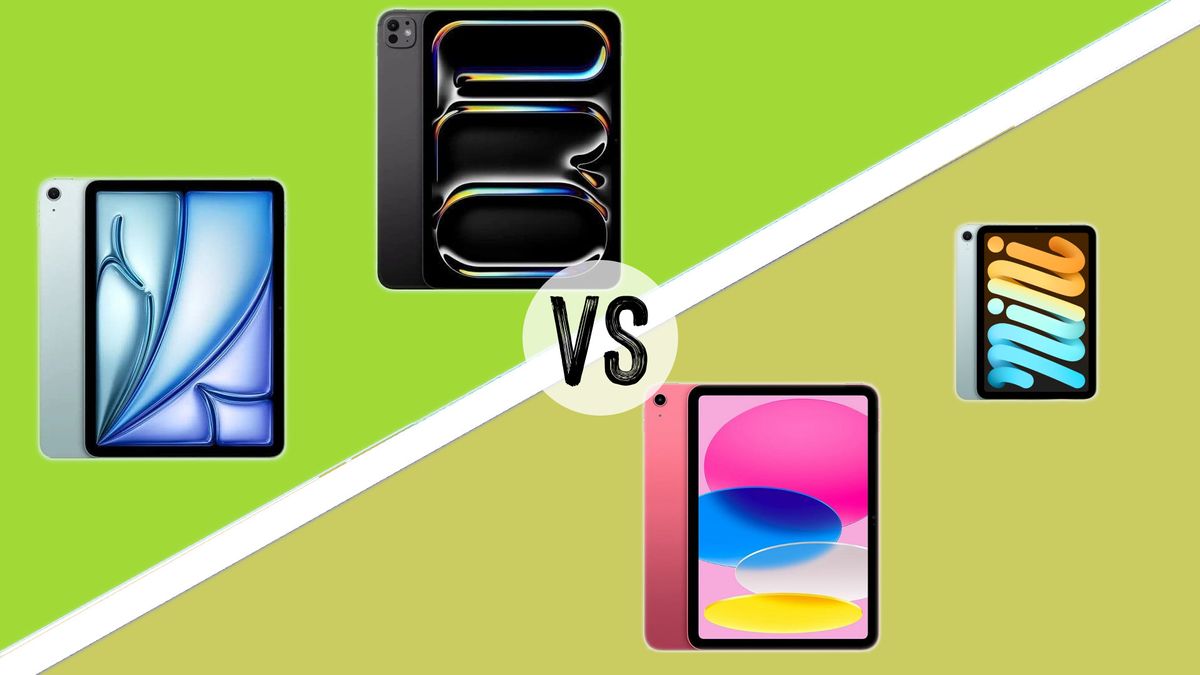
If you’re trying to decide which iPad to buy, you’ve got four key choices. Do you go for the ultra-powerful iPad Pro, with its cutting-edge silicon and first-class display, or save a little money and go for the almost-as-powerful iPad Air? Or, indeed, you might want to put portability first and opt for the diminutive iPad mini, which has seen the most recent update in the form of the iPad mini 7th Gen – then there’s also the all-rounder basic iPad, which last had an update in 2022.
It can be a little confusing, so we’ve put together this guide. We’re not ranking the iPads or saying which is “best” – mostly because that’s an easy question to answer; it’s the flagship iPad Pro. Rather, we’re looking critically at which iPad is best for which type of user, to help you sort out which is the right iPad for you. For simplicity’s sake, we’re going to mostly focus on the most recent model in each line – comparing every single iPad that has ever been made would be too large a task to be useful! If you’re also looking for a stylus for your iPad, check out our rundown of Apple Pencil 2 vs Apple Pencil 1, Pro and USB-C.
Quick iPad comparison
We’ll start with a quick comparison of the most recent iPad models in each line before we get into the nitty-gritty of each one’s design, components and performance. You can look over our guide to the iPad generations if you want to learn more about each line, and we also have a guide to the best iPad alternatives if you want to go in a different direction.

Chipset: Apple M4, 10-core GPU
Display: 13-inch or 11-inch
Battery life: 10 hours basic use
The most powerful iPad ever made, the iPad Pro (M4, 2024) is a professional tool offering a huge amount of raw processing muscle. It runs 2D and 3D creative apps with ease, it can handle video editing, it works with the Apple Pencil Pro stylus and its display is breathtaking – though the high price will rule it out for a lot of users.
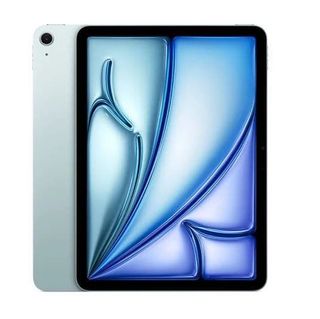
Chipset: Apple M2 chip, 8-core CPU, 9-core GPU, 16-core Neural Engine
Display: 13-inch or 11-inch
Battery life: 9 hours basic use
Slick, fast and capable, the iPad Air offers a level of power that’s pretty close to that of the iPad Pro (in this iteration, closer than ever) at a cost that is slightly less eye-watering. It’s highly capable for creative tasks, in 2D and even 3D, and it’s suited to all but the heaviest hitters.
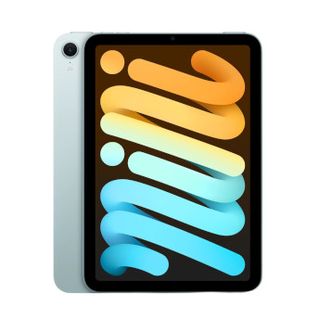
Chipset: A17 Pro, 6-core CPU, 5-core GPU, 16-core Neural Engine
Display: 8.3-inch
Battery life: 10 hours basic use
The smallest iPad you can buy, though not the cheapest, the iPad mini has been revamped to offer the “full iPad experience” in a smaller body. It provides a silky-smooth experience for creatives, with a computing power boost and Apple Pencil Pro support. As long as the canvas isn’t too small for you, it’s a great choice.
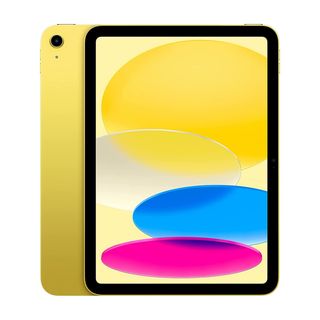
Chipset: A14 Bionic chip, Neural Engine
Display: 10.9-inch
Battery life: 10 hours basic use
It’s looking a little old by tech standards, but the basic iPad (10th Gen) now occupies a pretty valuable space as the cheapest current iPad you can buy. If you’re looking more for an iPad for casual web browsing and watching a bit of Netflix, rather than intense creative tasks, it’s the best buy – though it does offer Apple Pencil support.
Price
Prices of iPads vary pretty dramatically – especially when you consider the fact that the high-end iPads can be customised with extra computing components and storage, all of which adds to the cost.
For instance, the current flagship iPad Pro (M4, 2024) comes at a starting price of $1,299 / £1,299 for its 13-inch version, or $999 / £999 for the 11-inch. However, if you choose to spec that 13-inch version up with 2TB of storage and 16GB of RAM, nano texture glass on the display and cellular connectivity, you’ll hit $2,599 / £2,599. Add an Apple Pencil Pro, a Magic Keyboard and Apple Care protection and you’ll be sailing past $3k / £3k. It adds up quickly!
The iPad Air (M2, 2024), meanwhile, is quite a bit cheaper. The 11-inch model starts at $599 / £599 and the 13-inch model starts at $799 / £799. Once again, the price will rise if you start adding extra features like storage and cellular connectivity – though even with all the internal bells and whistles, a 13-inch iPad Air will still only come to $1,499 / £1,499, so it’s still significantly less expensive than the Pro.
The latest iPad mini 7th gen is cheaper still, with a starting price of $499 / £499. If you opt for the largest 512GB storage model and go for cellular connectivity, this will rise to $949 / £949, and then you can of course increase that further by adding the Pencil, Magic Keyboard etc.
Get the Creative Bloq Newsletter
Daily design news, reviews, how-tos and more, as picked by the editors.
And finally, it may not surprise you to learn that the oldest iPad is the cheapest. The starting price of the iPad (2022, 10th Gen) is $349 / £329, and if you add the 256GB storage and cellular connectivity options, it rises to $649 / £629. That’s still your cheapest option, and is pretty excellent value for what you get.
Winner: iPad (2022, 10th Gen) is the one to get if you’re looking to spend as little as possible on a new iPad.
Design
You might think we’re comparing apples and apples here, and to an extent you’d be right. Fundamentally they’re all iPad-shaped iPads – none of them have built-in cupholders or switchblades or whatever. However, there are some pretty significant differences to the designs when you look closer, especially around the displays.
For instance, the iPad Pro (M4, 2024) very much sports the display to beat right now. The flagship 13-inch version features an Ultra Retina XDR display with tandem OLED technology, delivering impressive brightness and outstanding contrast (the specs claim a 2,000,000:1 ratio). Its reflectivity considerably improved compared to previous models – though to get best results there, you need to shell out a little extra for the nano-textured glass option.
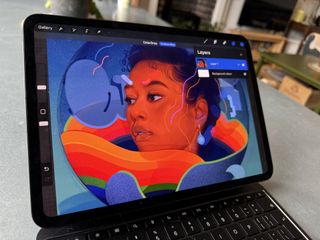
The iPad Air (M2, 2024) lacks the Ultra Retina XDR technology – though that’s not to say it doesn’t deliver a stunning viewing experience. Brightness is punchy, blacks are deep, contrast is crisp. It has also been treated with an anti-glare coating that makes it pretty usable outdoors, though it’s not a patch on the Pro’s nano-textured glass.
The iPad mini 7th Gen uses an 8.3-inch Liquid Retina display, and this is one thing that disappointed us a little in our review. While Apple has corrected the infamous ‘jellyscrolling’ issue that had plagued previous iPad minis, the frame rate is stuck at 60Hz, without the lovely 120Hz ‘ProMotion’ technology we’ve seen on the iPad Pro line.
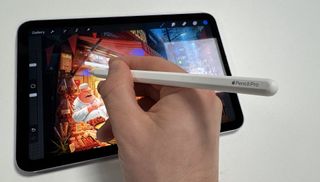
And the iPad (2022, 10th Gen), meanwhile, offers a perfectly acceptable 10.9-inch Liquid Retina display. Design-wise, however, it’s worth noting that this iPad both requires an adapter to charge the Apple Pencil, and doesn't offer magnetic storage for it – something that annoyed users enough it was clearly a high priority to fix for the Apple Pencil 2.
In terms of portability, the iPad mini is obviously the smallest and most travel-friendly option. However, it might surprise you to learn that the next slimmest and lightest is actually the iPad Pro, which shaves a millimetre in thickness and about 40g in weight off the iPad Air, thanks to its next-generation components. In fact, the ‘lighter than air’ iPad Air is actually the thickest and heaviest iPad in this line-up. Confusing. Of course, once you put a case on an iPad, as most creatives do, the differences between all models (except the mini) go from negligible to imperceptible, so it’s not an issue to fret too much about.
Winner: The flagship iPad Pro (M4, 2024) comes out ahead here. Not only does it boast a next-generation display with incredible contrast and a nano-textured glass option, but it’s also one of the slimmest and lightest in the line-up.
Performance
The iPad Pro (M4, 2024) offers the ultimate in iPad performance right now. The base model comes with 8GB of RAM, and if you go for the 2TB storage version, you also get 16GB of RAM. Producing scorchingly fast results in our benchmark tests, this iPad will handle basically any creative task you can throw at it. We put the top-end version with 16GB RAM through a battery of tasks, including painting in Procreate and 3D modelling tasks in a number of apps including Nomad Sculpt, and video edits in LumaFusion. In every case, it handled the task with aplomb, and its body never felt hot to the touch.
But of course, that power comes at a price. And what’s more, it’s a level of power that most users simply don’t need – most people reading this aren’t 3D artists, don’t edit high-resolution video, etc. And even if you do meet that description, that’s no guarantee that you’re keen on the idea of off-loading all of this work onto an iPad, rather than a comfortable desktop computer or laptop. In our review, our expert Glen Southern dinged the latest iPad Pro a little on this score, pointing out that while it’s an exceptional creative tool, it’s an over-specced and overpriced one for the vast majority of purposes.
So what of the others? The iPad Air (M2, 2024) offers buttery-smooth performance for most creative tasks, and scored well in our benchmark tests. Its 8GB of RAM puts 3D work in play, though we experienced some lag once tasks got more crunchy, in a way that you wouldn’t catch on the iPad Pro.

The 2022 iPad uses an older A14 Bionic chip, which does a smooth job for basic browsing and 2D creative tasks, while being a bit lacking for anything more serious. However, it’s worth noting that you are stuck using the older Apple Pencil with this iPad, rather than the newer Apple Pencil 2 or Pencil Pro.
In our view, the star of the show here is the new iPad mini 7th generation. Its A17 Pro chip delivered benchmark test results that beat the iPad Air, and in use it could match the iPad Pro in terms of the smoothness of its performance for creative tasks. The only thing our expert could really get it to struggle with was exporting 4K video – if you are looking for an iPad specifically for video editing, the Pro is a better choice.
In battery life terms, the models are all roughly on par. The iPad Pro, iPad mini and iPad are all rated to about 10 hours of basic use, which will naturally decrease with intensive use. The iPad Air lags slightly behind, with a rating of nine hours’ basic use.
Winner: The iPad mini 7th gen offers performance that’s close to the iPad Pro, for a price that the average user might actually be prepared to pay.
Which should I buy?
You can’t really go wrong here; these are four excellent tablets, each with their own advantages. If you are a professional creative who wants to use an iPad for the most ultra-demanding creative tasks like 3D modelling and high-res video editing, and money is no object, then get the iPad Pro (M4, 2024). However, that description probably doesn’t apply to you – it doesn’t apply to many people. So, which to choose?
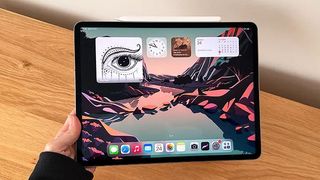
If you’re going to be using the iPad for creative work, whether in 2D or 3D, you’re realistically looking at either the iPad Air (M2, 2022) or the iPad mini 7th generation. This is something of a toss-up that’s going to be dictated by your priorities. The iPad mini 7th gen is obviously more portable, and it also edges out the iPad Air in terms of its performance speed and what it can handle. It’s also cheaper. However, the iPad Air offers a bigger, better display that’s a more comfortable drawing canvas.
The iPad 10th Gen 2022 is the cheapest option on this list, even if you spec it out to the max. If you want something that works for simple digital drawing and painting, it’s a good bet. The fact that it’s only compatible with the older Apple Pencil doesn’t matter too much in the short term, as it still provides a solid drawing experience. However, this is a bit lacking in terms of future-proofing, as if you later upgrade to a more advanced iPad, you may have to spend more on getting a newer stylus.
So, in brief. For pros, it’s unsurprisingly the iPad Pro. For serious creatives, it’s either the iPad mini or iPad Air, depending on whether you place more value on fast performance or a larger display. And for casual users, it’s the basic iPad.
For more on the different iPads, see our best iPad for drawing guide.

Thank you for reading 5 articles this month* Join now for unlimited access
Enjoy your first month for just £1 / $1 / €1
*Read 5 free articles per month without a subscription

Join now for unlimited access
Try first month for just £1 / $1 / €1

Jon is a freelance writer and journalist who covers photography, art, technology, and the intersection of all three. When he's not scouting out news on the latest gadgets, he likes to play around with film cameras that were manufactured before he was born. To that end, he never goes anywhere without his Olympus XA2, loaded with a fresh roll of Kodak (Gold 200 is the best, since you asked). Jon is a regular contributor to Creative Bloq, and has also written for in Digital Camera World, Black + White Photography Magazine, Photomonitor, Outdoor Photography, Shortlist and probably a few others he's forgetting.